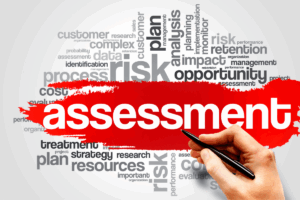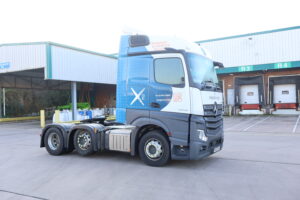Modern supply chains may be more finely tuned than ever, but that also makes them more vulnerable than ever. From natural disasters and cyber threats to equipment failures and human error, carefully balanced logistics networks are susceptible to any number of factors. Simply responding to events after they happen is no longer a viable way forward for businesses, with the approach resulting more often than not in disruptive operational downtime and damage to brand reputation.
While traditional risk mitigation strategies like safety stock and multiple suppliers offer a degree of protection, they often fall painfully short in a modern marketplace that’s defined by exceptionally high customer expectations. In an environment where customers expect same-day or next-day delivery as the norm, advanced risk management is required. In this article, we explore how advanced risk assessments are bringing new levels of resilience to logistics and how companies like X2 are using predictive technologies to keep supply chains safer than ever.
How risk assessments prevent future safety issues
As in most areas of life, prevention is the most effective way to address threats. This is where powerful risk assessments come into play, serving as a predictive mechanism for improving safety, safeguarding personnel and preserving assets before any harm materialises. It’s about looking ahead and acting decisively now, rather than merely complying with minimum regulations and hoping the worst doesn’t happen.
Identifying and quantifying hazards
At its core, a risk assessment systematically pinpoints potential hazards. This extends beyond obvious dangers like faulty brake systems to include more subtle, yet equally important factors. The pervasive risk of driver fatigue on long hauls, for example, or the dangers posed by unsafe routes through politically turbulent areas.
Once identified, these hazards are then subjected to a likelihood and severity analysis. This process helps quantify the risk by estimating how probable an incident is and how severe its impact would be. It’s an objective measurement that allows risks to be prioritised, keeping resources available where they’re most likely to be needed.
Proactive root cause analysis and scenario planning
Effective risk assessments do more than just list potential problems – they explore their root causes. For instance, instead of just noting “driver error” as a risk, a deeper analysis might uncover systemic issues like “unrealistic scheduling pressures” or a “lack of advanced driving techniques” in training.
Further to this, scenario planning allows logistics companies to simulate potential failure points. By imagining “what if” situations – like a sudden tyre blowout on a particular stretch of motorway – they can test hypothetical preventative measures and refine emergency responses without real-world consequences. This helps identify vulnerabilities in procedures or equipment before they’re exposed in a live situation.
Implementing preventative controls
Once risks are identified and understood, the next step is implementing preventative measures, which can take several forms:
Engineering controls: These involve designing safety measures into the operation itself. This might mean mandating vehicles with advanced driver-assistance systems (ADAS), incorporating ergonomic cab designs to reduce driver strain or investing in state-of-the-art cargo securing equipment.
Administrative controls: These are about establishing and enforcing safer procedures. Examples include strict driver qualification standards, mandatory rest periods, comprehensive pre-trip inspection checklists, and dynamic route optimisation that considers real-time safety data like accident hotspots or road closures. Regular, tailored safety briefings also fall into this category.
Personal Protective Equipment (PPE): Making sure all personnel have, and consistently use, appropriate safety gear for specific tasks, such as high-visibility clothing for roadside operations or specialised gloves for handling certain cargo.
The benefits of this predictive approach to safety are profound. It leads to a major reduction in accidents, with fewer injuries and fatalities. Beyond the human impact, companies benefit from improved compliance with health and safety legislation, potential reductions in insurance premiums and a marked improvement in morale and staff retention (as employees feel genuinely valued and protected by the company they work for).
Why risk assessments are essential for logistics companies
While preventing employee accidents is a major factor, the effectiveness of properly executed risk assessments extends far beyond individual well-being. For a logistics company, these risk assessments are strategic tools that improve overall business resilience, secure financial stability and boost market standing. It’s about safeguarding the entire operational and financial integrity of a firm.
Bolstering financial health and protecting assets
Proactively identifying and mitigating threats allows businesses to avoid a whole host of costly consequences. This includes direct cost avoidance from accidents, cargo damage, product spoilage, and regulatory penalties, which can otherwise drain resources. Risk management also lessens the financial impact of broader supply chain disruptions, preventing expenses like rerouting, expediting fees or lost sales due to delays. Further to this, it also helps to protect valuable assets – vehicles, warehouses and the goods they hold – from theft, damage or degradation.
Cultivating reputation and client trust
Given the crowded and highly competitive nature of the modern market, a company’s reputation is more important than ever. Effective transport risk management equates to effective reputation management and helps build brand trust. When a company consistently delivers reliable, uninterrupted service, it generates a huge amount of client confidence and goodwill that helps nurture long-term partnerships.
Successfully preventing major incidents or operational failures also shields a company from damaging media scrutiny and public backlash. A proactive approach to risk makes a logistics company a preferred partner, attracting clients who prioritise dependability and a proven commitment to secure operations. Ultimately, it keeps a brand synonymous with reliability and trustworthiness.
Maintaining operational continuity and efficiency
Aside from safety measures, risk assessments allow companies to identify bottlenecks and single points of failure in their routes, processes or technological systems before they cause major disruptions. These operational insights result in the development of effective contingency plans for a wide array of scenarios, including severe weather, major road closures, unexpected labour shortages, or even cyberattacks on IT infrastructure.
Proactive planning like this means rapid recovery and minimal downtime. Providing a clear, data-driven understanding of potential threats and their likelihood, risk assessments also deliver optimised resource allocation, making sure that human, vehicle and financial resources are strategically deployed to areas of highest vulnerability or greatest operational impact.
Why conducting risk assessments is crucial in transport operations
Beyond strategic foresight and business resilience, risk assessments are key to the day-to-day flow of transport operations. The real-time, constantly changing nature of moving goods means that risks are never static, with transport risks evolving by the minute, requiring constant vigilance and adaptability.
Whether it’s black ice, traffic incidents or simple road closures, unexpected situations can spring up without warning. What was deemed a safe route an hour ago might not be so now. As a result, integrating risk assessment into daily routines is as important for logistics companies as any other aspect of their business.
Real-time application and continuous monitoring
Much more than just a bureaucratic checklist, risk management is a dynamic system that evolves with every mile travelled and every piece of data gathered.
Real-time route planning: Modern route planning involves far more than static maps, integrating real-time data feeds on traffic congestion, adverse weather conditions and any relevant security alerts. This allows routes to be constantly assessed and adapted, even mid-journey, ensuring optimal safety and efficiency..
Tailored briefings and training: Daily driver briefings should be informed by the latest risk assessments, highlighting specific hazards for upcoming routes or updated security protocols. Ongoing training must also adapt, reflecting new risks identified from recent operational data.
Continuous monitoring and rapid response: This involves the use of technologies like GPS tracking for vehicle location and speed, telematics for monitoring driver behaviour and vehicle health diagnostics and integrating real-time weather and news alerts. Importantly, this monitoring must be paired with immediate response protocols – automated rerouting suggestions, emergency contact procedures and on-call support for breakdowns or security breaches.
Cargo-specific risk management: Every type of cargo presents its own specific set of risks. Perishable goods require careful temperature control, high-value items require heightened security measures and hazardous materials need specialised handling procedures and compliance. Operational risk assessments need to thoroughly detail and implement these cargo-specific controls.
Post-trip analysis: Every completed journey, regardless of whether it was incident-free or not, provides valuable operational data. Analysing this information helps refine future risk assessments, update operational protocols and identify new best practices.
The technology factor
The very technology that underpins modern risk assessment and mitigation processes in logistics – such as advanced tracking systems and route planning software – simultaneously introduces a major risk itself. The expansive digital networks designed to safeguard logistics operations inadvertently transform these companies into prime targets for cybercriminals.
With cyberattacks on the rise, a successful breach can compromise sensitive operational data, bringing entire transport networks to a halt and inflicting major financial losses. Beyond the immediate monetary drain, the profound reputational damage and erosion of trust in these circumstances can be disastrous, impacting future contracts and customer loyalty.
Logistics firms must therefore apply the same rigorous analysis they dedicate to physical operational procedures with equal, if not greater, care to their digital networks.
Keeping logistics secure with X2 (UK)
To help achieve this level of safety and dependability at X2 we implement strict, multi-layered risk assessment frameworks that inform every aspect of our operations, from granular route planning to overarching strategic decisions. This includes contingency plans with customised alternative routes and fullback carriers tailored to your specific needs. With over 1,000 partner carriers at our disposal, we have continual access to a broad range of specific resources and expertise that means we can effectively reduce operational risk for any consignment type in any circumstances.
All our partners are vetted to ensure their safety and compliance align with our own exacting standards. This, in combination with real-time oversight, rapid responses and seamless communication, means that X2 keeps your supply chain dependable and ensure reliable delivery.
To find out more about X2 and how our advanced technology and risk protocols can improve your brand performance and reputation, you can contact us here.


